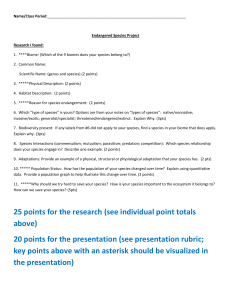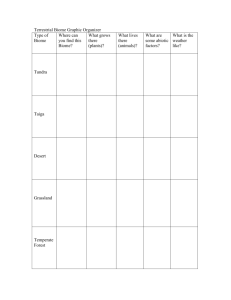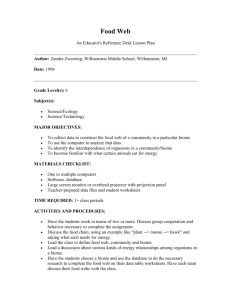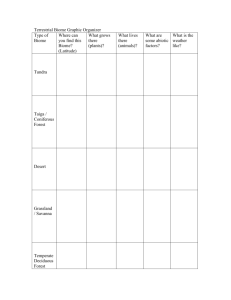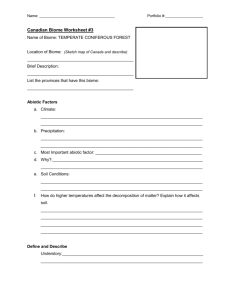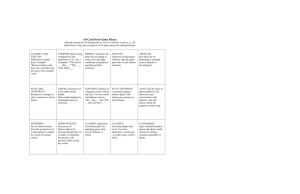BIOMES
advertisement
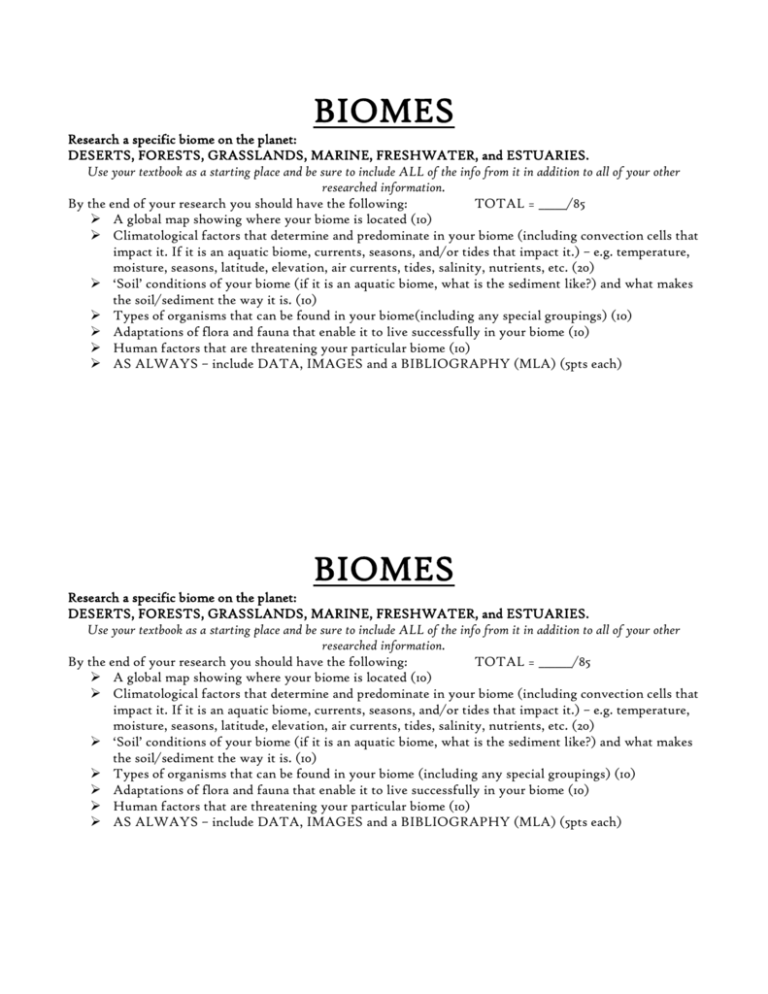
BIOMES Research a specific biome on the planet: DESERTS, FORESTS, GRASSLANDS, MARINE, FRESHWATER, and ESTUARIES. Use your textbook as a starting place and be sure to include ALL of the info from it in addition to all of your other researched information. By the end of your research you should have the following: TOTAL = _____/85 A global map showing where your biome is located (10) Climatological factors that determine and predominate in your biome (including convection cells that impact it. If it is an aquatic biome, currents, seasons, and/or tides that impact it.) – e.g. temperature, moisture, seasons, latitude, elevation, air currents, tides, salinity, nutrients, etc. (20) ‘Soil’ conditions of your biome (if it is an aquatic biome, what is the sediment like?) and what makes the soil/sediment the way it is. (10) Types of organisms that can be found in your biome(including any special groupings) (10) Adaptations of flora and fauna that enable it to live successfully in your biome (10) Human factors that are threatening your particular biome (10) AS ALWAYS – include DATA, IMAGES and a BIBLIOGRAPHY (MLA) (5pts each) BIOMES Research a specific biome on the planet: DESERTS, FORESTS, GRASSLANDS, MARINE, FRESHWATER, and ESTUARIES. Use your textbook as a starting place and be sure to include ALL of the info from it in addition to all of your other researched information. By the end of your research you should have the following: TOTAL = ______/85 A global map showing where your biome is located (10) Climatological factors that determine and predominate in your biome (including convection cells that impact it. If it is an aquatic biome, currents, seasons, and/or tides that impact it.) – e.g. temperature, moisture, seasons, latitude, elevation, air currents, tides, salinity, nutrients, etc. (20) ‘Soil’ conditions of your biome (if it is an aquatic biome, what is the sediment like?) and what makes the soil/sediment the way it is. (10) Types of organisms that can be found in your biome (including any special groupings) (10) Adaptations of flora and fauna that enable it to live successfully in your biome (10) Human factors that are threatening your particular biome (10) AS ALWAYS – include DATA, IMAGES and a BIBLIOGRAPHY (MLA) (5pts each)

